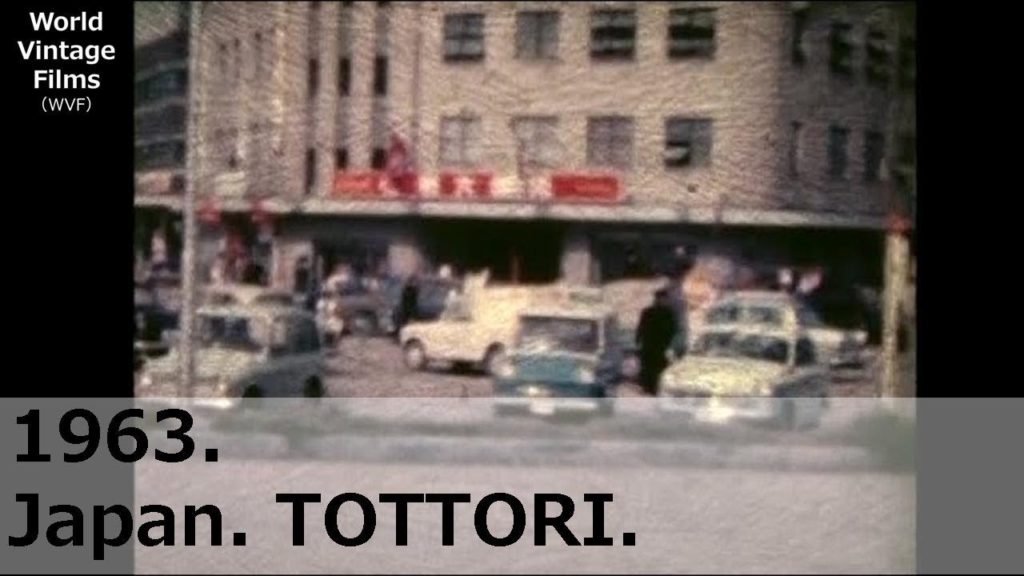Tottori Sand Dunes is a vast gravel area on the coast of the Sea of Japan in Tottori City, Tottori Prefecture, and is a typical coastal sand dune. It is designated as a special protection area in Saninkaigan National Park, and extends 2.4km north-south and 16km east-west. It is the largest sand dune in Japan that can be visited, and is the second largest after Sarugamori Sand Dunes in Higashidori Village, Shimokita District, Aomori Prefecture, including places that are generally not accessible. It was selected as a national natural monument in 1955 (Showa 30) and as one of the 100 Geological Selections in Japan in 2007 (Heisei 19). It is considered to be one of the symbols of Tottori prefecture along with Hoki Daisen. Due to food shortages after the war, the Act on Temporary Measures for Promotion of Agriculture in Coastal Sandlands was enacted in 1953 (Showa 28), and sabo afforestation began in earnest nationwide, and sand dune development began on a large scale.
Private houses near the dunes were plagued by the damage of sand flying from the dunes, so windbreaks were planted, which caused the scale of the dunes, which are a valuable natural resource and a tourist resource, and changes in the ecosystem. Therefore, we are trying to coexist with local residents while reducing the area of the windbreak. Originally, the scale of the dunes was smaller than before the windbreak forest was planted, and many trees were growing in the surrounding area. However, as a result of cutting down these dunes for the fuel of Tatara iron making, the dunes have expanded artificially. Since the 2000s, there have been many hot years in the summer, and as a result, windbreaks are dying, and the roads on the south side of the dunes are often filled with sand, causing sand to scatter in the dunes. Although Tottori Prefecture has begun planting black pine trees as a countermeasure, the countermeasures have not caught up due to its slow growth. There are facilities such as “Tottori Sand Dunes Children’s Country” around the Tottori Sand Dunes. Rest houses and souvenir shops are lined up at the entrance to the Tottori Sand Dunes as a tourist destination, and camels and horses are bred near the entrance as part of sightseeing. It is also used as a place for excursions to nearby elementary, junior high and high schools, and as a place for sky sports such as hang gliders and paragliders. In addition, the All Japan Sandboard Championship is held using the slope of the dunes. On summer nights, you can see the squid fishing boat’s fishing fire (Isaribi) on the coast, which is also a tradition. White onions, scallions, and long thighs cultivated in the sand dunes near the Tottori Sand Dunes are special products. In addition, the Tottori Sand Dunes are sometimes used to save costs when shooting scenes that assume deserts outside Japan in TV dramas and TV commercials.
In Japan, when we say simply “pre-war”, we usually refer to the period before the outbreak of World War II, starting with the attack on Pearl Harbor. The Japanese economy grew by leaps and bounds over a period of about 19 years, from 1954 to 1973, when the domestic postal code system and Euroclear were established in 1968, followed by rapid progress in bringing the bill clearing system online. In 1956, the White Paper on the Economy was published.
About World Vintage Films
I’m doing a Youtube video of footage taken from the 1910s to the 1980s.
The footage is original and was filmed by my family and my friends while they were traveling.
That’s why most of the footage was shot in Japan.
The first step in the editing process is to convert the video from analog to digital. Then I remove the unnecessary parts and add the original music and subtitles. We don’t want to hide the footage, so we don’t have many subtitles.
Black and white footage may be converted to color.
International and domestic travel around the world, before, during and after the war.
We have over 10,000 films that have not yet been released to the public. We will continue to edit and distribute a few more in the future.
There is a lot of valuable footage. Especially rare are old footage from less developed countries. At that time, the equipment for filming was rare. Pre-war footage of Japan is also valuable. Old cars and trains. There is also footage of airplanes shot from the sky. Towns and markets, and people. And people. Famous tourist spots and natural scenery. The fashion sense is also interesting and different from today. Enjoy the scenery in the old style.
Mostly on 8mm, 16mm, 9.5mm, 35mm, etc. Newer types of video, such as VHS, are not covered.
(I translate in multiple languages, so my writing is poor.)
#1960s
#tottori
#japan
BGM:MusMus


AloJapan.com